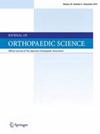Reproducibility of dynamic balance and anterior tibiofibular gap measurements in men and women: A menstrual cycle-based longitudinal study
IF 1.4
4区 医学
Q3 ORTHOPEDICS
引用次数: 0
Abstract
Background
The reproducibility of dynamic balance is an essential component of athletic performance and injury prevention, although it is affected by sex differences. This study aimed to confirm the reproducibility of repeated dynamic balance measurements and ultrasonography assessments of the anterior tibiofibular gap that may contribute to changes in dynamic balance for each sex.
Methods
This was a longitudinal study involving 48 feet, with 12 men and 12 women. Measurements for men were obtained four times, approximately once a week, and for women, once during each of the four periods of the menstrual cycle (menstrual, follicular, ovulation, and luteal phases). The measures included dynamic balance in a single-leg jump with forward landing and the anterior tibiofibular gap measurement in standing and sitting positions; rate of change in the anterior tibiofibular gap was calculated from the values in standing and sitting positions.
Results
The intraclass correlation coefficient for dynamic balance was excellent for men at 0.936 (0.881–0.969) and good for women at 0.843 (0.708–0.925). Regarding the anterior tibiofibular gap, the intraclass correlation coefficient for standing and sitting were 0.999 (0.997–0.999) and 0.998 (0.996–0.999), respectively, in men; and 0.976 (0.955–0.988) and 0.991 (0.984–0.996), respectively, in women, with excellent values for both sexes. Whereas no significant changes in dynamic balance and rate of change in the anterior tibiofibular gap were observed in the four measurements in men (p > 0.05), there was a significant variation in women (p < 0.05).
Conclusions
While reproducibility of dynamic balance and anterior tibiofibular gap measurements was high overall, it was lower in women than in men. Women exhibited variations in these measurements during each period of the menstrual cycle, peaking during ovulation. Recognizing these fluctuations could inform injury prevention strategies tailored to sex-specific differences in dynamic balance and ligament extensibility.
男性和女性动态平衡和前胫腓骨间隙测量的可重复性:一项基于月经周期的纵向研究。
背景:动态平衡的再现性是运动表现和损伤预防的重要组成部分,尽管它受到性别差异的影响。本研究旨在确认重复动态平衡测量和超声评估胫腓骨前间隙的可重复性,这可能有助于男女动态平衡的变化。方法:这是一项纵向研究,涉及48英尺,12名男性和12名女性。对男性进行四次测量,大约每周一次,对女性在月经周期的四个时期(月经期、卵泡期、排卵期和黄体期)各进行一次。测量包括单腿前着地时的动态平衡,站立和坐姿时的前胫腓骨间隙测量;根据站立和坐姿的值计算前胫腓骨间隙的变化率。结果:动态平衡的类内相关系数男性为0.936(0.881 ~ 0.969),女性为0.843(0.708 ~ 0.925)。站立与坐位对胫腓骨前间隙的类内相关系数分别为0.999(0.997-0.999)和0.998 (0.996-0.999);女性分别为0.976(0.955 ~ 0.988)和0.991(0.984 ~ 0.996),男女差异均极好。在四种测量方法中,男性动态平衡和胫腓骨前间隙变化率没有显著变化(p > 0.05),而女性有显著变化(p结论:虽然动态平衡和胫腓骨前间隙测量的可重复性总体上很高,但女性的可重复性低于男性。女性在月经周期的每个时期都表现出这些测量值的变化,在排卵期间达到峰值。认识到这些波动可以告知针对动态平衡和韧带延伸性的性别差异量身定制的损伤预防策略。
本文章由计算机程序翻译,如有差异,请以英文原文为准。
求助全文
约1分钟内获得全文
求助全文
来源期刊

Journal of Orthopaedic Science
医学-整形外科
CiteScore
3.00
自引率
0.00%
发文量
290
审稿时长
90 days
期刊介绍:
The Journal of Orthopaedic Science is the official peer-reviewed journal of the Japanese Orthopaedic Association. The journal publishes the latest researches and topical debates in all fields of clinical and experimental orthopaedics, including musculoskeletal medicine, sports medicine, locomotive syndrome, trauma, paediatrics, oncology and biomaterials, as well as basic researches.
 求助内容:
求助内容: 应助结果提醒方式:
应助结果提醒方式:


